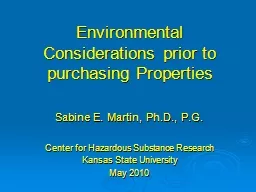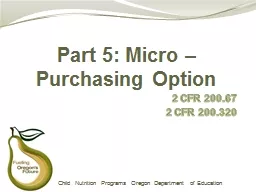PPT-Environmental Considerations prior to purchasing Properties
Author : giovanna-bartolotta | Published Date : 2019-11-18
Environmental Considerations prior to purchasing Properties Sabine E Martin PhD PG Center for Hazardous Substance Research Kansas State University May 2010 Purpose
Presentation Embed Code
Download Presentation
Download Presentation The PPT/PDF document "Environmental Considerations prior to pu..." is the property of its rightful owner. Permission is granted to download and print the materials on this website for personal, non-commercial use only, and to display it on your personal computer provided you do not modify the materials and that you retain all copyright notices contained in the materials. By downloading content from our website, you accept the terms of this agreement.
Environmental Considerations prior to purchasing Properties: Transcript
Download Rules Of Document
"Environmental Considerations prior to purchasing Properties"The content belongs to its owner. You may download and print it for personal use, without modification, and keep all copyright notices. By downloading, you agree to these terms.
Related Documents














